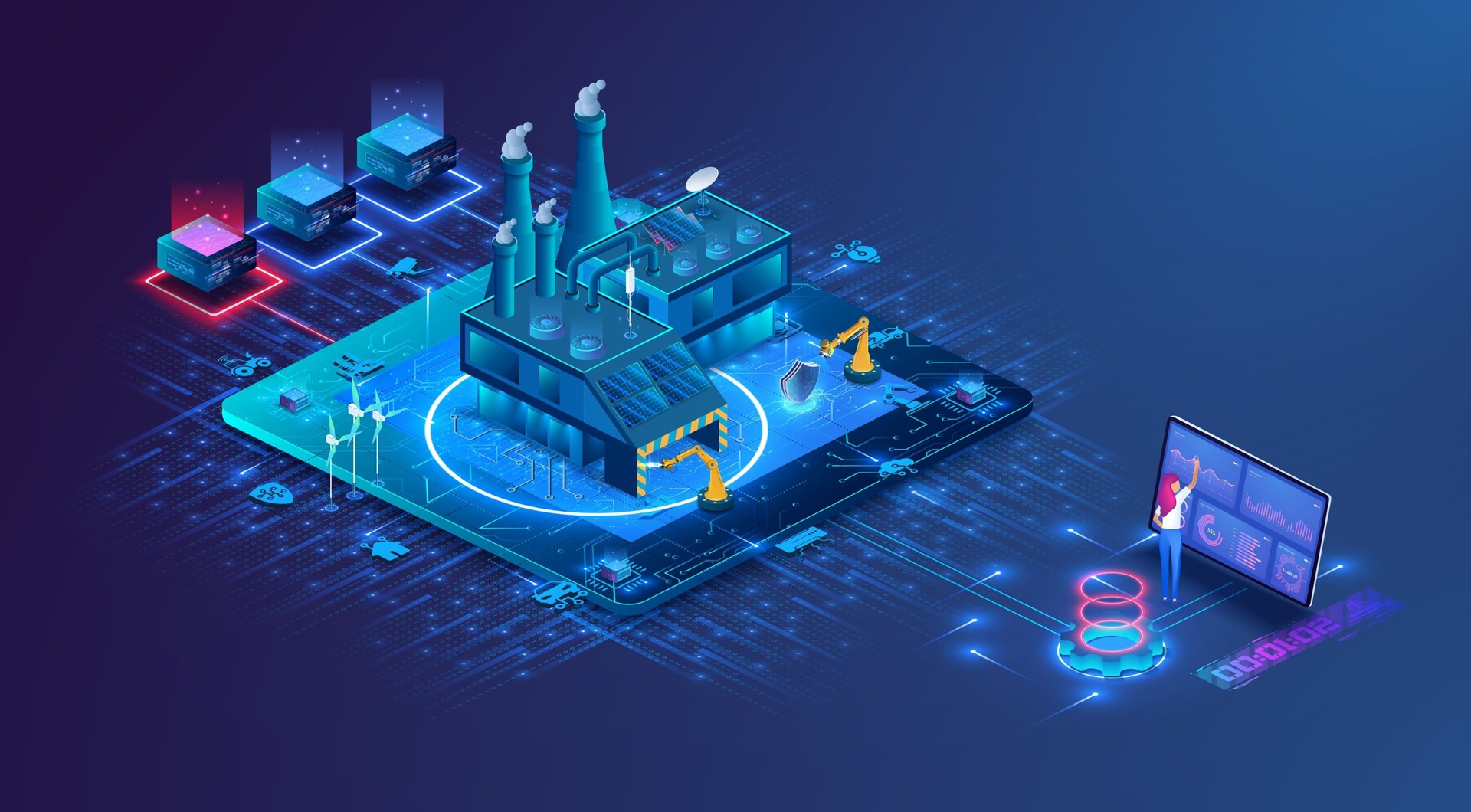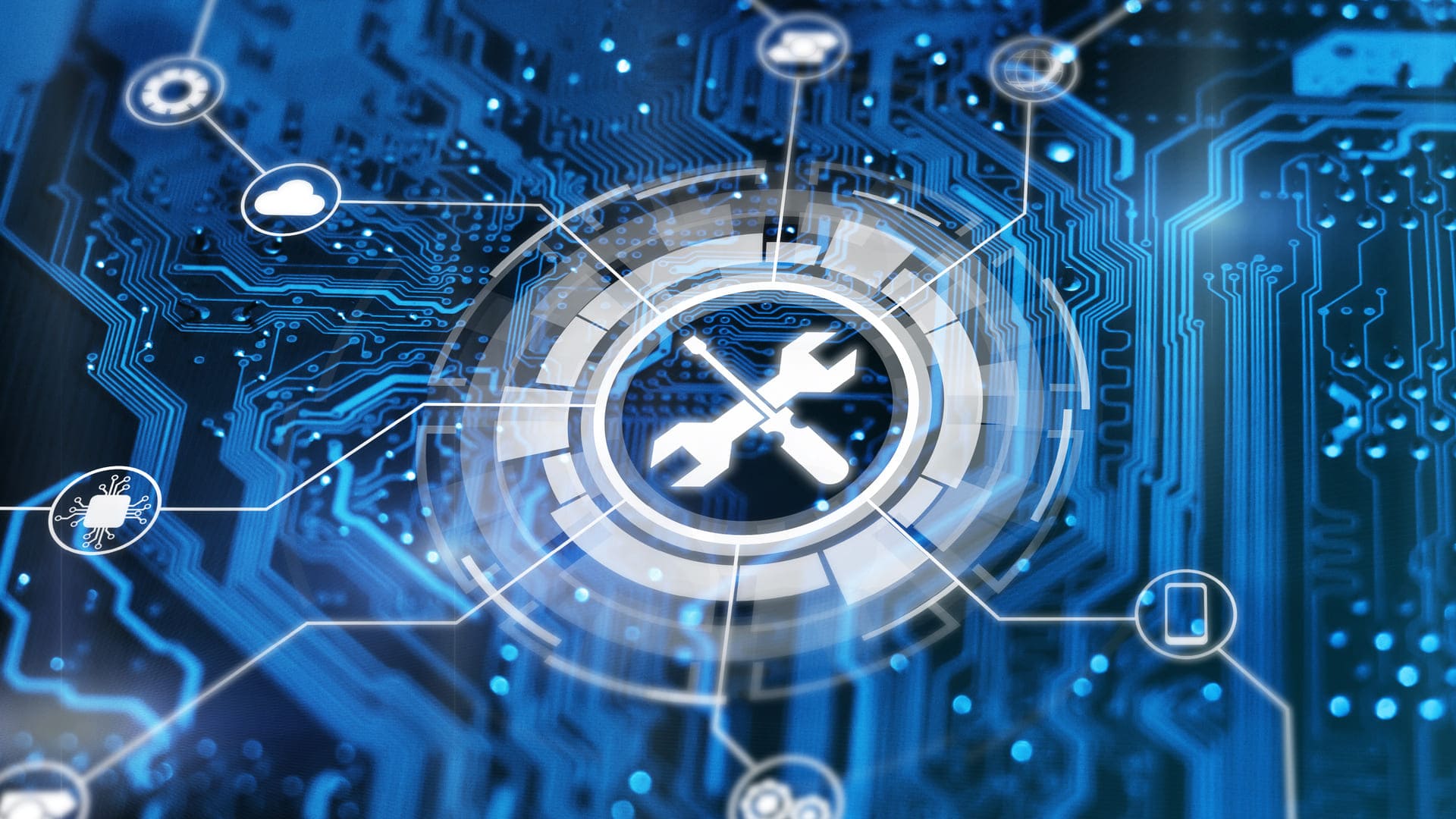Types of industrial maintenance
In “Smart factories and industrial maintenance” we provided a general introduction to this aspect of a business’ activity. However, we also explained the different types of maintenance that exist and that investing in one type or another has certain implications.
Do you want to know more about smart factories and industrial maintenance?
Nonetheless, this way of classifying them is an oversimplification that does not cover all the scenarios in which maintenance may be needed. It is for this reason that we will devote this article to define the most popular types of maintenance, to explain the difference between types and models of maintenance and to study the most common models.
Corrective Maintenance
This type of maintenance is used when the device or machine has already failed and must be repaired, by substituting the components that are provoking the malfunction, or replaced, in the event of catastrophic failure.
Surprisingly, some factory components are not revised until they are no longer operational, as the cost of some non-critical elements is much lower than maintenance costs. In fact, corrective maintenance is usually applied to such items by default, but also to processes that can be interrupted without causing major issues (in production or safety) or to complex systems whose failures cannot be predicted.
This approach to industrial maintenance has a number of drawbacks, such as the fact that smaller defects can lead to more concerning failures due to the lack of foresight or the dependency (to some extent) on luck. This type of maintenance, therefore, implies having a greater reserve fund and does not avoid serious failures and production stoppages.
As a result, we can distinguish between “run-to-fail” corrective maintenance (the one described above) and “emergency” maintenance, which is the one carried out when the failure poses an immediate threat to the plant’s operation or to the workforce.
Preventive Maintenance
It consists in scheduling a series of regular tests/repairs that will be carried out when the timing is convenient according to the usage of the machine, the time it has been active, its records, the manufacturer’s recommendations, and the production needs. The aim of this type of maintenance is to limit the number of unexpected failures, thus reducing the severity of the errors that may occur, in order to guarantee the service’s quality.
Compared to the corrective perspective, this is a proactive approach, but it is not without its disadvantages. First of all, it should not be forgotten that preventive maintenance does not use predictive data analysis, so it does not allow to predict the evolution of a device’s condition over time. Consequently, parts/machines are often replaced when they are still in good condition in order to avoid having to take corrective actions in the future. This saves some expenditure on components/equipment, but it does not make the most of the device’s useful life, and the enterprise will still incur in unnecessary costs. Moreover, scheduling monitoring operations implies devoting a team to this task on a regular basis.
Precisely because of its periodic and intermittent nature, it is imperative that checks are not skipped and that comprehensive reports are written to keep a record of the actions taken. Otherwise, we will not have the same information on all the process’ components, and their maintenance cycles will be altered, which can lead to various problems.
Predictive Maintenance
Predictive maintenance goes a step further in comparison with preventive, as it analyses the data (considered as key) of the elements that make up the factory (facilities, machinery, stock, workflows, etc.) and processes it to identify its dependence on other variables. In this way, high-value information can be extracted to anticipate failures, but also to monitor the state of the industrial plant in real time.
Thanks to the utilisation of predictive analysis techniques, industrial automation and the principles of data science and data analytics, it is possible to carry out urgent corrective operations, but it is also feasible to plan those maintenance actions that will be necessary in the future. This maintenance system, therefore, works thanks to real-time data and data records, which makes it possible to strike a balance between different factors such as costs, remaining useful life, health/safety risks or the effects of a production stoppage.
Some of the variables that are usually taken into account in predictive maintenance systems are temperatures, humidity levels, vibrations, pressure, speed and noise, among others.
Other types of industrial maintenance
Other approaches to maintenance include overhaul maintenance and total productive maintenance, which have some particularities that are worth mentioning, even when it is undeniable that they share some of their characteristic with the aforementioned types.
Overhaulo
The main particularity of this maintenance is that it aims to keep the equipment as good as new. Consequently, scheduled revisions are carried out before the equipment fails (preventive nature) or when the performance/reliability of the machinery is below its standards (causing a decrease in production capacity), so that it is a matter of time before it malfunctions.
Therefore, during these operations, all worn out parts are replaced to guarantee the industrial plant’s optimal operation. At the same time, the supervisor estimates for how long it will last in optimum condition in order to decide when the next inspection will take place.
Total Productive Maintenance
This type of maintenance is based on collaboration, so operators must perform simple tasks that enable them to inform the supervisor about the state of the infrastructure, thus allowing to make informed decisions with respect to more complex maintenance operations. Specifically, we usually differentiate between three types of actions.
- Productive: to improve productivity or to recover previous efficiency levels lost due to a failure.
- Maintenance: to ensure that the industrial plant’s equipment is in optimum condition.
- Total: they are transversal, so they affects other departments.
Thus, the differentiating characteristic of total productive maintenance is that it focuses on the workforce, i.e., everybody must be committed to ensuring that the facilities are in their best possible condition.
Do you want to know more about industrial automation?
Models of maintenance
All these types of industrial maintenance, as we have just seen, have their advantages and disadvantages, but the greatest benefit that any of them can provide will be obtained after combining them with the others to adapt to the needs of the machine, the process or, directly, the company.
The concept of maintenance model refers to this, to the usage of a mixture of different types of maintenance to adjust to the characteristics of the equipment that is part of a specific production process. The most common combinations are listed below.
Corrective model
As with a corrective type of maintenance, its namesake is the most basic model, and it is applied to less important components. Among the most common maintenance actions within this model are, in addition to repair, lubrication and visual inspection.
Conditional model
The conditional model is the most suitable for equipment that, although important, does not usually suffer from malfunctions, but also for equipment that is not used intensively. In addition to the actions typical of the corrective model, the conditional also diagnoses the machinery through tests or trials. If an error is spotted or there is a measurement that does not add up, it will be studied, but, if this is not the case, no further action is taken.
Systematic model
The objective of this model is to ensure the proper functioning of critical equipment whose reliability must remain intact, as well as of machines whose failure may cause major drawbacks. Consequently, maintenance operations will be carried out regardless of the equipment’s condition and, in addition, this machinery will be tested to check whether a major overhaul is necessary or whether a component needs to be repaired.
The main difference with preventive maintenance is the lack of regularity, because the priority, in this case, is reliability, while it does not matter so much the amount of time that has elapsed between one examination and the previous or the errors that may have arisen previously.
High availability model
Finally, we will talk about the high availability model. As its name suggests, it is used for components that cannot fail, i.e., those that must have an availability of more than 90%. Thus, it is the most demanding model, given that a malfunction in one of these devices would have catastrophic consequences for production and/or safety.
Precisely because of this high availability, it is not possible to resort to a corrective kind of maintenance, nor to the preventive. Then, the only option is to apply predictive analytical techniques in order to obtain a thorough knowledge about the machinery’s status in real time, which makes it possible to schedule the necessary stoppages (whose frequency is usually annual). If a repair cannot be postponed, the technicians should find a provisional solution that avoid halting production.
These stoppages, as they are so far apart in time and they are so critical for the process’ viability, are the opportunity to carry out a complete overhaul of the machinery, and to replace those parts that are likely to fail in the course of the year or whose useful life is under two years. In addition, if it has been necessary to resort to a provisional solution, these halts are used to find a more permanent one.
Will you prepare for change? Discover how to implement predictive maintenance in your industry.



